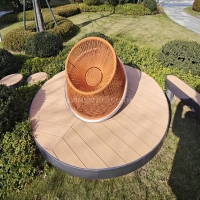Welcome to the website for landscape facilities products and knowledge.
How do landscape tables align with sustainable design principles in green building projects?
Landscape tables, often crafted from reclaimed or sustainably sourced materials, are a cornerstone of sustainable design in green building projects. These tables seamlessly blend functionality with environmental responsibility, reducing waste and minimizing carbon footprints. By incorporating natural elements like wood, stone, or recycled composites, they support biophilic design—a principle that fosters human-nature connections, enhancing well-being and productivity.
Their modular and durable construction aligns with circular economy principles, ensuring longevity and adaptability. Additionally, landscape tables often feature permeable surfaces or integrated planters, promoting stormwater management and urban biodiversity. In green buildings, they serve as multifunctional hubs for collaboration, education, or relaxation, embodying the ethos of sustainability.
Beyond aesthetics, their low-maintenance and energy-efficient production processes further reduce environmental impact. As green building certifications like LEED prioritize eco-conscious materials, landscape tables emerge as a practical yet innovative solution, bridging design and sustainability for a greener future.
Related search:

Recommendation
Swivel chair-Specialty steel structure woven rattan leisure chair with rotatable design